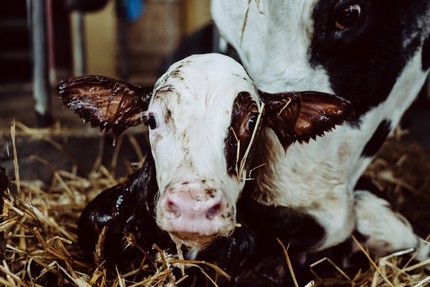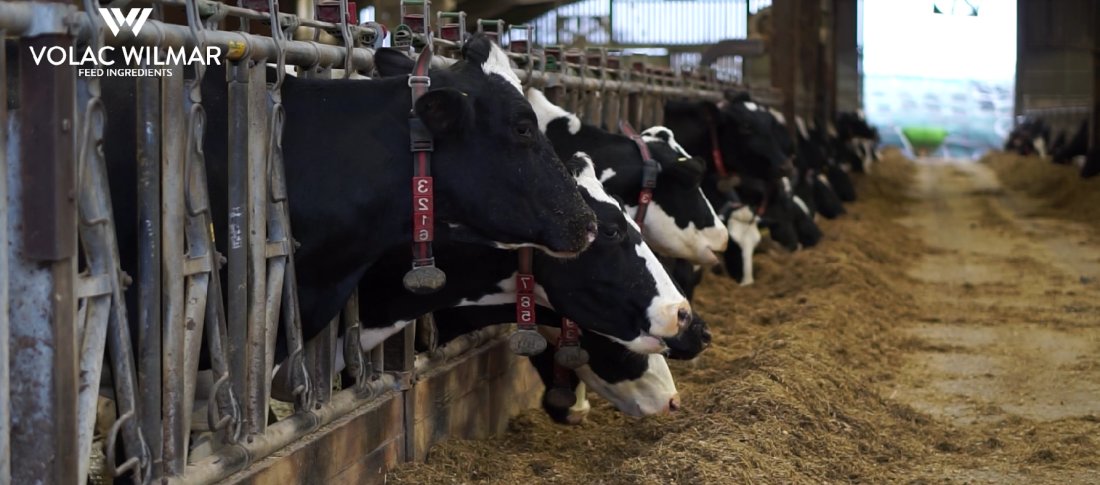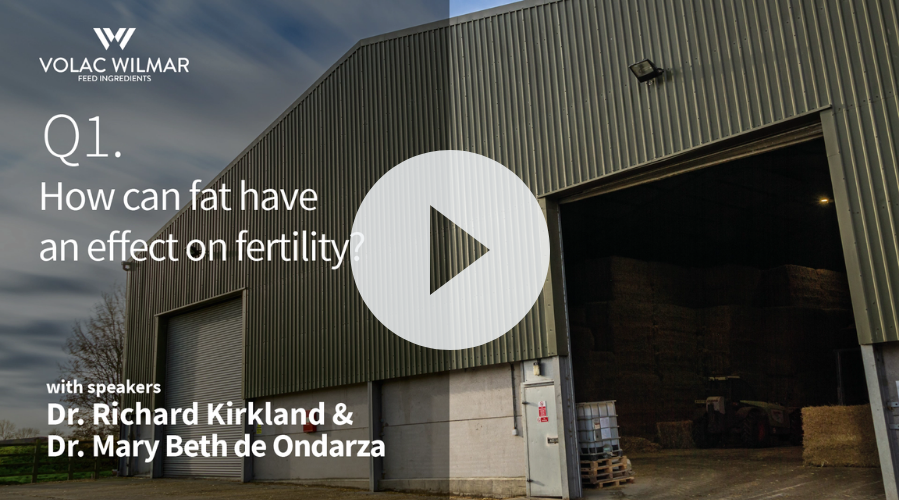How much do you know about dairy cow fertility and its impact on productivity and profitability on a dairy farm-wide scale?
To learn more on the matter, we spoke to US Dairy Nutritionist Dr. Mary Beth De Ondarza and our Global Technical Manager, Dr. Richard Kirkland to discuss the effects of feed fats on fertility, learn the importance of Body Condition Score (BCS) in relation to conception rates, and gain insight into why the right nutrition in those first 100 days is so vital.
You can watch the full video here: The Hidden Cost of Fertility - with Dr Mary Beth De Ondarza and Dr Richard Kirkland
How does fat affect fertility?
A major risk of removing fat from the diet is that reproduction rates fall as a result of cows losing body condition due to lower energy in the feed. Other non-energy related effects of fat nutrition explored by US researchers supplementing dairy diets with Megalac, include its impact on follicle size.
Dr Kirkland explains: “As we increase the level of specific fats to early lactation dairy cows, we see those animals ovulating a larger egg. With this, we end up with a larger follicle on the ovary, which is a real benefit to us as the larger the follicle, the larger the corpus luteum.”
With the corpus luteum being the production site for progesterone - the key hormone for fertility - this is a valuable finding. But remember that the fatty acid blend of the fat supplement is important.
Why is Body Condition Score so important for conception rates?
For many years, it's been known that losses in body condition are associated with poorer reproduction in our dairy cows.
Dr. Mary Beth shares an example: “Back in the 1980s, some research by Cornell University found that cows that lost more than one point in body condition score on a scale of 1-5 had a first service conception rate of only 17%. Those cows that lost less than half a point had a first service conception rate of 65%.”
This is because energy supply is critical in the fertility of dairy cows. The more we fail to meet the energy requirements of the dairy cow in the diet, the more we push cows further into a negative energy balance. This will be evident in the loss of condition, and if we push that too far, the cow simply won’t get back in calf.
As a guideline, research from the University of Nottingham indicates that a 0.5 unit reduction in BCS through the early lactation period = 10% reduction in conception rate.
Download our Body Condition Scoring e-book here
What is the role of fat in supporting fertility?
Specific fatty acid blends of feed fats can be very important for helping maintain BCS in your dairy cow, which is fundamental for supporting fertility, and when we look at it on a more scientific level, we can understand why. The calcium salt products such as Megalac provide oleic acid which is the key fatty acid for improved BCS.
If they don’t have sufficient progesterone, the cow will be unable to get pregnant. Progesterone is built from cholesterol. So when we feed animals higher levels of fat in the diet, we end up with higher levels of cholesterol leading to increased progesterone production, which can improve fertility.
Additionally, research data has shown that when using Megalac as a fat source there has been a notable improvement in egg quality. This is likely due to the C18:1 fatty acid component supplied within the supplement.
Read one farmer’s story on how he improved his herd’s fertility here

What are the long-term effects of poor fertility?
Poor fertility comes at a cost. Not only in just the losses in milk but in the repeated inseminations and pregnancy scanning that will be required. In turn, fewer calves will be born and increased culling of cows will occur due to poor reproduction.
Another worry is that if you have poor reproduction, you will have more late lactation cows, which are more prone to getting fat. When cows are fat in their late lactation period, they are fatter when they calf. This will result in a greater loss of body condition, and then you’re entering a downward spiral with cows in poor BCS and thus reduced fertility for the next lactation. It can take one to two years to break that cycle and get cows back to a healthy breeding condition.
Why are the first 100 days so vital when it comes to nutrition?
As we push cows for higher and higher levels of production, their energy requirements increase. Therefore, the emphasis is on getting greater energy supply into their rations.
Cows are most productive (and therefore most profitable) between 60 and 170 days in milk. Consequently, the pressure is on in the first 100 days to ensure we are meeting their energy requirements for optimum productivity and fertility and to ensure they spend as much of their life as possible at between 60 and 170 days in milk.
What are the main pieces of advice you would give farmers regarding maintaining or increasing fertility?
Dr. Mary Beth says: “Don’t just cut the fats. Think about how you can target feed your dietary fats better.”
With this in mind, it’s important to consider whether feeding the same product to your whole herd is necessary or whether some cows require target feeding specific supplements to support their needs. This approach will help you maintain high levels of reproduction while at the same time maintaining close control over the profitability of your herd.

